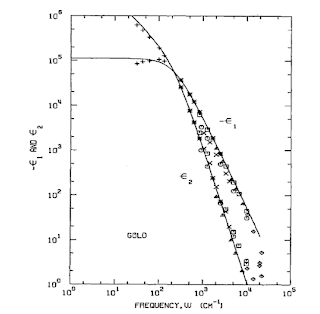We teach it to undergraduates [as I am doing today!] and claim that it captures many properties of elemental metals? Then we say it works badly for cuprates and other strongly correlated electron metals. But, just how good is it? Surely, this should be in textbooks. But, it actually took me a long time to find the graph below. It shows the frequency dependence of the real and imaginary part of the dielectric constant for gold. The solid lines are the Drude predictions with two free parameters, the dc conductivity and the quasi-particle scattering time. The experimental data covers the range 50 to 20,000 cm-1.
The figure is from an Applied Optics paper by Ordal et al.
Subscribe to:
Post Comments (Atom)
Maxwell's demon and the history of the second law of thermodynamics
I recently reread Warmth Disperses and Time Passes: The History of Heat by Hans Christian von Baeyer As a popular book, it provides a beaut...

-
This week Nobel Prizes will be announced. I have not done predictions since 2020 . This is a fun exercise. It is also good to reflect on w...
-
Is it something to do with breakdown of the Born-Oppenheimer approximation? In molecular spectroscopy you occasionally hear this term thro...
-
Nitrogen fluoride (NF) seems like a very simple molecule and you would think it would very well understood, particularly as it is small enou...




No comments:
Post a Comment